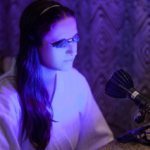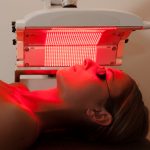What Is Chronic Pain?
Chronic pain is classified as persistent pain that can last for weeks to years. It’s usually self diagnosable and there is no known cure quite yet, although there are forms of treatment that can help. There are more than 3 million U.S. cases each year, making this a common condition.
Chronic pain is more than physical. It’s also mental and it can quickly take over your life. Constant physical pain can decrease energy and mood levels, leaving victims feeling low and even depressed. The most common form of treatment for chronic pain is medication. Acupuncture, surgery, electrical stimulation, and cognitive behavioral therapy are also forms of treatment. But with medication being the most common treatment for chronic pain, it’s obvious that another option needs to be found. Medicine is not a permanent fix and while it can help you mentally because you are feeling less pain, it’s also harmful in the sense that it is addictive. Solving one mental issue by adding another, addiction, is not a proactive form of treatment. This is why we are going to discuss light therapy.
The Symptoms…
The symptoms for chronic pain do not take rocket science to understand. Acute pain is a painful sensation that typically lets us know of an injury, or a bigger problem. Chronic pain, however, lasts for far too long. If the pain in the patient’s body lasts for more than 12 weeks, it is classified as chronic pain. The primary symptom of chronic pain is constant and persistent pain.
According to WebMD, a credible website dedicated to all things medical, chronic pain has other symptoms, aside from just pain. These symptoms are thought to arise due to the link between the mental state and the physical state during chronic pain. WebMD writes:
The symptoms of chronic pain include:
- Mild to severe pain that does not go away
- Pain that may be described as shooting, burning, aching, or electrical
- Feeling of discomfort, soreness, tightness, or stiffness
Pain is not a symptom that exists alone. Other problems associated with pain can include:
- Fatigue
- Sleeplessness
- Withdrawal from activity and increased need to rest
- Weakened immune system
- Changes in mood including hopelessness, fear, depression, irritability, anxiety, and stress
- Disability
(WebMD.com)
Common pain areas are in the back, joints, mouth, face, muscles, bones, and neck. The sensory perception of this pain can be classified as pins and needles as well as sensitivity to pain. There are many different types of pain and these can be caused by psychological factors. Each patient has a unique form of chronic pain.
The Cause…
It is common for chronic pain to arise due to an injury. For example a back sprain or a car accident. It can also come from illness. And for others, there is no clear cut cause. This might be the most difficult “cause” to deal with.
No matter what caused the chronic pain to arise, it remains a part of the patient’s body due to either inflammation or dysfunctional nerves. The goal of treatment for chronic pain is to reduce the pain and improve functions so that the patient can live a normal life again.
Covering up the pain with medications (opiates) or using more holistic forms of treatment and not seeing results can ultimately make the situation worse. This is why we are promoting light therapy. This is why everyone should be pushing for light therapy!
Light Therapy & Chronic Pain
Red light therapy has been used to treat pain for awhile now. It can relieve sore muscles, heal wounds, relieve joint pain, and so much more. Infrared red light therapy is changing people’s lives every day. And while most red light therapy products are being advertised for treating chronic pain, the research needs to continue. While hand held devices from Amazon may work for some people, each chronic pain case is different. Some are far more intense than others. This is why light therapy is constantly being experimented with in regards to pain. If a cure for chronic pain is on the horizon, we cannot stop searching.
This is why researchers at the Montreal Neurological Institute and Hospital of McGill University are taking their experiments so seriously. These researchers have been able to see pain relief in mice using optogenics, a new, extremely specific, non-invasive form of light therapy. During optogenics, a substance is injected into mice that induce them into a certain condition. For this experiment, they were subjected to chronic pain. The goal of optogenics is to treat the mice of this condition.
Tech Times has an April 2016 article about this light therapy experiment. The author, Catherine Cabral-Isabedra, explains:
“Once neurons were subjected to yellow light, the pain response to light and heat was inhibited. The researchers said that pain relief was seen to last for more than 24 hours in mice with 1 hour of inhibition.
Once neurons were subjected to yellow light, the pain response to light and heat was inhibited. The researchers said that pain relief was seen to last for more than 24 hours in mice with 1 hour of inhibition.
Senior author and professor of neurology and neurosurgery at McGill University Philippe Seguela explained that the opsins, which respond to light, can only be expressed if Cre recombinase is present.
“When we transfer these to neurons, we can control their responses simply by illuminating the skin with innocuous yellow light,” said Seguela.
“Opsins can be packaged in viruses and viral expression can be genetically restricted to specific neuronal populations allowing a higher cellular selectivity,” says Seguela. “This will allow chronic pain patients to benefit from a non-invasive and highly precise analgesic method to modulate their pain.”
The study aims to understand the physiology of chronic pain and provide groundwork for alternative pain management.”
(techtimes.com)
Why This Is So Important…
Given that medications, mainly opiates, are the main form of treatment for chronic pain, this recent discovery is groundbreaking. President Barack Obama has recently proposed new rules to manage the growing opioid use in our country. In United States alone, more than 2 million people are dependent upon painkillers. When painkillers are prescribed for chronic pain, the individuals suffering from pain develop a tolerance to the drug. Eventually they take more, and unfortunately for some, they take far too much and end up overdosing. Pain killers kill more than 40 people each day in the U.S. If chronic pain can be one less condition that is prescribed pain killers, we might be able to see an end in sight for this pain killer cemetery.
Optogenics offers great hope as an alternative to traditional painkilling medications. Because of it’s high temporal and spatial control on neuron activity, light therapy might actually win this battle.
Are You Sold?

Tendilite World’s Top Red LED Light Therapy Joint Pain Relief
Amazon for $194.93 (on sale!)
Optogenics light therapy is currently not being used on humans, but that doesn’t mean you can’t join the game. Red light therapy is being proven effective for treating a wide array of conditions, including pain. For some individuals, red light therapy has been successful in treating chronic pain, depending on what has caused the condition.
The Tendilite Joint Pain Home Therapy treatment package is FDA cleared, drug free and harm free. It is also highly reviewed and a fair price for the results it offers. The treatment sessions are fast and pain free. Patients simply hold, or have someone else hold, a small red light therapy device up to where the pain is for up to one minute at a time. The light should be shined directly at the joint or disc that is causing pain.
This Tendilite device can reduce pain, promote muscle relaxation, increase blood circulation, reduce swelling and stiffness and activate necessary collagen that is used to rebuild connective tissue.
This device is a small step towards big results. While it may not be what was used in the experiments in Montreal, it is still highly effective for lower grade pain. Give it a shot! And keep your eyes peeled for new light therapy research!








